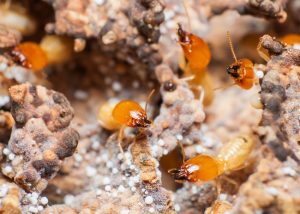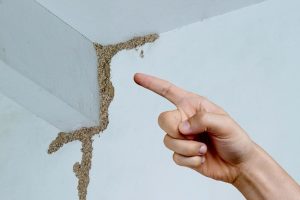 Myrtle Beach termites are continuously causing damage to a lot of homes, making them a top concern among the residents. Termites can easily destroy a home especially if not treated and resolved immediately. What is worse is that their presence is very difficult to confirm. In fact, many homeowners are only able to tell they have termite infestation when the problem has gotten worse, particularly when the termites have damaged a portion of their wall or foundation.
According to experts, the key to resolving termite infestation is increased knowledge. Learning more about termites will help homeowners to easily identify whether or not they are dealing with termites. This also helps them to effectively ward off termites from infesting their homes.
Below are some other facts about Myrtle Beach termites that every homeowner should know.
More than 4,000 species of termites are lurking around the world, 50 of these are in North America. Each species has different characteristics and traits. Some can cause damage in minutes, while others are good in hiding and staying unnoticed. Despite this, there is only one termite specie in South Carolina and that is the Eastern Subterranean Termites.
Knowing what type of termite you are dealing with will help you and the pest control experts to effectively eliminate them. Keep in mind that different species of termites require different ways of control and management.
In a nationwide level, the damage that termites cause can cost more than the combined damage from all natural disasters – including wind hail, hurricanes and tornadoes – in one year. This is why it is highly recommended for homeowners to educate their selves and increase their knowledge about termites.
There is an increase in termite infestation in many homes in as per recent reports. This is based on the increase in the number of calls for assistance that local pest control experts, like Zap Pest Control Inc., have received.
Most often, the first sign of termite infestation is when you see a swarm of flying termites coming out of your walls, trim and floors. This frequently happens when you punched a hole in the wall to hang your decors and paintings or when you accidentally damaged your flooring. These areas are where termites often hide. Thus, a small hole in these areas will agitate the termites and cause them to come out.
When this happens, you should immediately call a local pest control expert even if you are not sure whether it is a swarm of flying termites or flying ants. The most important thing is for a professional pest control specialist to arrive at your home as soon as possible to confirm and control the situation.
Termites have the ability to stay hidden and unnoticed for years, slowly and quietly eating away the parts of your home. Thus, the only way for you to confirm their presence in your home is if they come out of their hiding places. Unfortunately, this only happens when their colony is mature and this can take up to several years.
However, there is another way for you to tell whether or not you have termite infestation at home. You can do an overall termite inspection. All you have to do is routinely check for signs of termite presence in your home. These primarily include saw dust at the bottom of beams and foundation as well as hollow sound when knocking on walls and beams. For better results, you can opt to hire a professional to conduct yearly termite inspection.
Myrtle Beach termites are continuously causing damage to a lot of homes, making them a top concern among the residents. Termites can easily destroy a home especially if not treated and resolved immediately. What is worse is that their presence is very difficult to confirm. In fact, many homeowners are only able to tell they have termite infestation when the problem has gotten worse, particularly when the termites have damaged a portion of their wall or foundation.
According to experts, the key to resolving termite infestation is increased knowledge. Learning more about termites will help homeowners to easily identify whether or not they are dealing with termites. This also helps them to effectively ward off termites from infesting their homes.
Below are some other facts about Myrtle Beach termites that every homeowner should know.
More than 4,000 species of termites are lurking around the world, 50 of these are in North America. Each species has different characteristics and traits. Some can cause damage in minutes, while others are good in hiding and staying unnoticed. Despite this, there is only one termite specie in South Carolina and that is the Eastern Subterranean Termites.
Knowing what type of termite you are dealing with will help you and the pest control experts to effectively eliminate them. Keep in mind that different species of termites require different ways of control and management.
In a nationwide level, the damage that termites cause can cost more than the combined damage from all natural disasters – including wind hail, hurricanes and tornadoes – in one year. This is why it is highly recommended for homeowners to educate their selves and increase their knowledge about termites.
There is an increase in termite infestation in many homes in as per recent reports. This is based on the increase in the number of calls for assistance that local pest control experts, like Zap Pest Control Inc., have received.
Most often, the first sign of termite infestation is when you see a swarm of flying termites coming out of your walls, trim and floors. This frequently happens when you punched a hole in the wall to hang your decors and paintings or when you accidentally damaged your flooring. These areas are where termites often hide. Thus, a small hole in these areas will agitate the termites and cause them to come out.
When this happens, you should immediately call a local pest control expert even if you are not sure whether it is a swarm of flying termites or flying ants. The most important thing is for a professional pest control specialist to arrive at your home as soon as possible to confirm and control the situation.
Termites have the ability to stay hidden and unnoticed for years, slowly and quietly eating away the parts of your home. Thus, the only way for you to confirm their presence in your home is if they come out of their hiding places. Unfortunately, this only happens when their colony is mature and this can take up to several years.
However, there is another way for you to tell whether or not you have termite infestation at home. You can do an overall termite inspection. All you have to do is routinely check for signs of termite presence in your home. These primarily include saw dust at the bottom of beams and foundation as well as hollow sound when knocking on walls and beams. For better results, you can opt to hire a professional to conduct yearly termite inspection.
 Pest Control Tip: How To Get Rid Of Termites
Pest Control Tip: How To Get Rid Of Termites
The key to a successful pest control Myrtle Beach and management is knowledge on the specific type of pest you are dealing with. In this article, you’ll learn about a different type of termite, which is unlike the common termites that eat your home’s foundation. But this specific type of termites is also common in every home. You need to know all about them so you will know how to deal with them.
Introducing: dry-wood termites
What differentiates dry-wood termites from common termites is that they do not live underground. They are often found in wood sidings, wood supports in the attic, and in the roofing as well. They are also found to infest your crawlspaces specifically the ones near your attic. They are also commonly found eating the following:
- Wood molding particularly your windows’ and doors’ framing
- Wood siding and roofing
- Eaves and overhangs
- Joints and crevices all around your doors
1. Hollow sound coming from your wooden foundation after knocking on it. This means the termites have succeeded in eating the inside of the wood.
2. Visible damages on the wood that seemed like it was carved out. And if you try to pick a hole on the wood, you can easily do so even with a blunt pocket knife or screw driver.
3. Piles of dust and debris near your walls, door and window frames, and foundations. If the dust resembles coarse sand grain, then you can be sure the pile actually consists of the termites’ fecal matter.
4. Accumulation of insect wings on your window sills. This means that termites are swarming to get inside your house or to move to another hideout inside your home.

No comments:
Post a Comment